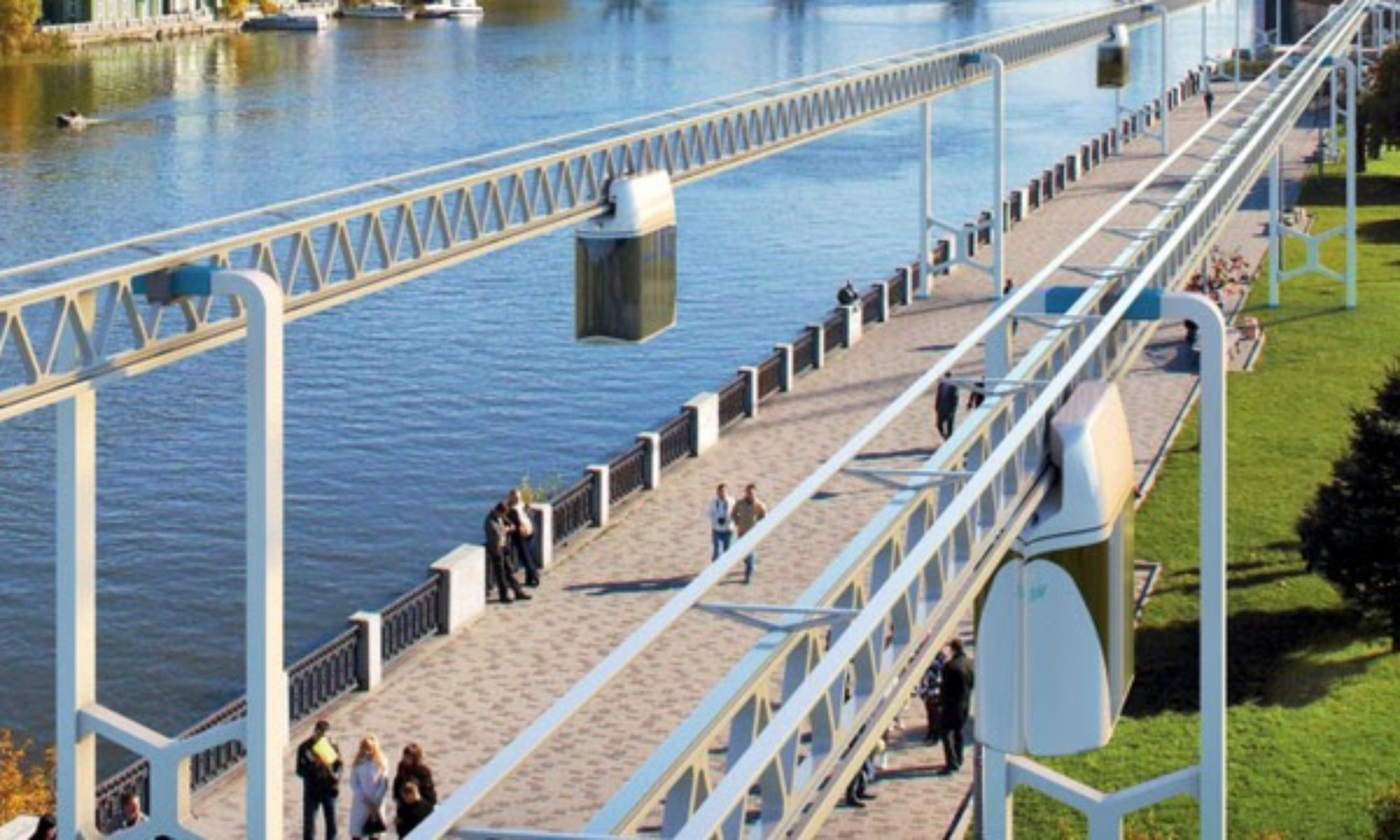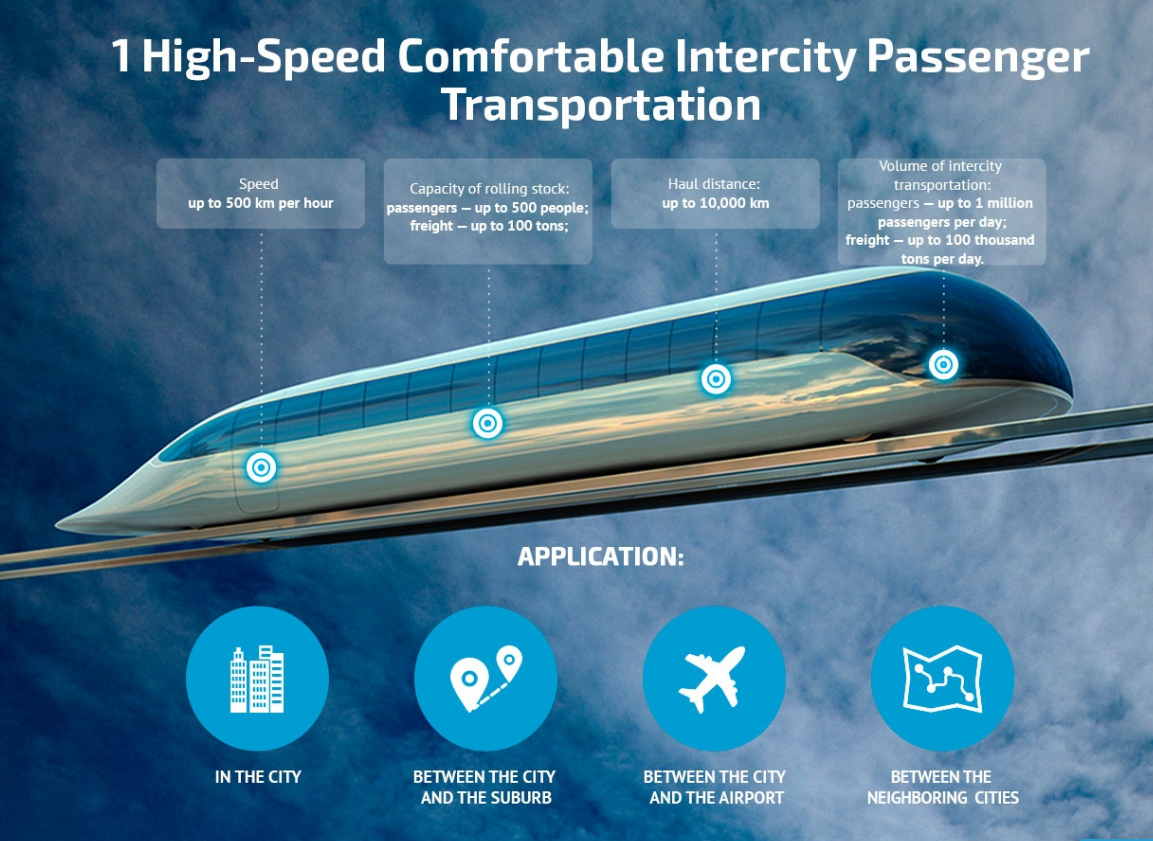MAIN FEATURES
1) Speed — up to 500 km per hour
2) Capacity of rolling stock:
- passengers — up to 500 people;
- freight — up to 100 tons.
3) Declivity (downward slope) — up to 10%, at special design — up to 30%.
4) Haul distance — up to 10,000 km.
5) Volume of high-speed intercity transportation:
- passengers — up to 1 million passengers per day;
- freight — up to 100 thousand tons per day.
6) Estimated value of city high-speed track, without the cost of rolling stock, passenger stations, terminals and infrastructure is from $3 million per km.
7) The cost of high-speed transportation is five times lower for passengers than transportation by existing high-speed railway, magnetic cushion trains and aircrafts.
COMPETITIVE ADVANTAGES
1) Decrease in capital construction costs through:
- significant reduction of land take for tracks and infrastructure;
- elimination of earth banks, removals, transport tunnels, bridges, crossovers, multilevel transport junctions and water sluices;
- elimination of safeguard railings and sound barriers from the linear portion of the high-speed track;
- the fact that rugged topography, low strength of underlying subgrade or complex geographical and climatic conditions do not lead to higher costs of the rail string elevated structure;
- reducing in a bigger scale the resource intensity of a rail string elevated structure, compared to the traditional transport elevated structure with continuous roadway.
2) Decrease of operating costs through:
- a reduction of energy and fuel consumption;
- a reduction of the costs for operational staff and their salary;
- a large reduction on engineering works as well as repair and recovery activities;
- eliminating the need to clean roads from sleet and snow in winter.
3) Reduction of self-cost of high – speed passenger and fright transportation by three and more times.
4) The possibility of sparing development and comfortable inhabitation in the hard-to reach new territories : islands, mountains , sea shelfs, etc.
5) Increasing the reliability and security of all-weather and year-round service of high-speed transport system in any natural climatic conditions..
6) The possibility of combining Sky Way structure and supports with overhead and cable power lines and communication lines – wire, fiber optical, radio relay and cellular lines.
ENVIRONMENTAL COMPATIBILITY
1) Low resource and energy consumption at all stages of high speed transport system life circle ( design, construction, operation and dismantling).
2) The design of elevated structure does not encroach on the landscape, ecosystem and biodiversity of the surrounding area.
3) The road does not destroy the fertile soil and the vegetation growing in it.
4) The suspended transport system does not prevent:
- motion of ground and surface waters;
- movement of people, domestic and wild animals;
- the work of agricultural, construction and special equipment.
RELIABILITY AND SAFETY
1) The high-speed rolling stock is equipped with a “running-off” prevention system.
2) There is a tenfold increase on the bearing load of string elements in the elevated structure.
3) Resistance to frost and ice, snow drifts, fog, dust and sand storms.
4) Operation reliability at any extreme air temperatures.
5) High resistance to vandalism and terrorist attacks.
6) Resistance to natural disasters:
- earthquakes — with magnitude up to 10 points on the Richter scale;
- floods, river overflows — with the water depth up to 10 meters and more;
- hurricane wind — with the speed up to 250 km per h or more;
- tsunami — with the wave height up to 20 m and more.



